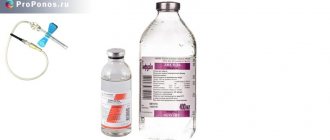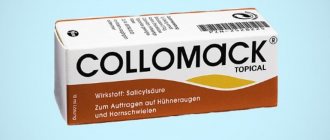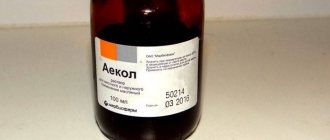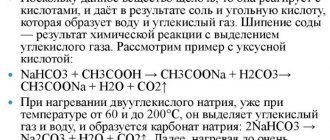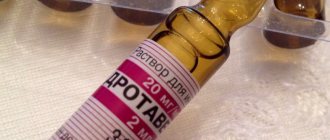Write a review
Reviews: 0
Manufacturers: Poly Pharmaceuticals Inc.
Active ingredients
- Polycresulen
Disease class
- Ulcer of the lower extremity, not elsewhere classified
- Bleeding not elsewhere classified
- Urogenital trichomoniasis
- Candidiasis of the vulva and vagina (N77.1*)
- Open wound of an unspecified area of the body
Clinical and pharmacological group
- Not indicated. See instructions
Pharmacological action
- Antifungal
- Antiprotozoal
- Antibacterial
Pharmacological group
- Antiseptics and disinfectants
Indications
The doctor prescribes Vagotil for the following inflammatory processes and infectious pathologies:
- Epithelic ectopia of the vaginal os and cervix
- Bleeding after diagnostic procedures and excision of polyps
- Papillomavirus affecting the urethral system
- Infectious lesion caused by Trichomonas
- 3rd and 4th degree burns
- Candyloma growths on the genital organs and in the sphincter area
- Inflammation caused by installation of obstetric devices to support the uterus
- Non-healing skin lesions
- Bleeding after tonsillectomy
- Eczema and peeling of the ear canals
- External ear inflammation
- Complications after tooth extraction
- Infections of the mucous membranes of the mouth and gums
- Ulcerative lesions of the legs
- Tissue death resulting from circulatory disorders.
Medicinal properties
When applied to affected tissue, Vagotil combines small dispersed particles into large conglomerates, thereby coagulating and thickening. As a result of the effect, the composition stops bleeding caused by damage to blood vessels. It cleanses healthy cells from dead elements using a selective method.
The active component polycresulene exhibits antiseptic, antiprotozoal, bactericidal and fungicidal properties. The element affects streptococci, staphylococci, salmonella, pseudomonas, candida, but most effectively fights trichomonas.
When applied or treated, Vagotil covers damaged tissue with a thin protective membrane that lasts for a week. During this time, necrotic cells are separated from healthy ones, which accelerates the regeneration process. During recovery, no scars are formed.
Release forms
The solution is the only form in which Vagotil goes on sale. It is a transparent liquid of a bright orange, red or brown hue. It is odorless, but has a bitter taste when used in the mouth. The composition is bottled in dark brown bottles of 50 gm. The bottle has a plastic cap with a protective thread and a propylene stopper. The pack is cardboard, white, with pink and blue design. A similar label is glued to the bottle. The box contains an instruction sheet and 1 bottle of solution. Not available in candle form.
Cost: solution 50 ml – 400-450 rubles.
Similar drugs:
- Furacilin Solution for topical use
- Lactobacterin siccum dry (Lactobacterin siccum) Lyophilisate for the preparation of solution for oral administration
- Palin Capsule
- Bactrim Oral suspension
- Nitroxoline Oral tablets
- Pancef Oral tablets
- Nifuroxazide (Nifuroxazide) Oral tablets
- Ercefuryl Oral suspension
- Sextaphag Oral solution
- Pancef Granules for the preparation of suspension for oral administration
** The Drug Directory is intended for informational purposes only. For more complete information, please refer to the manufacturer's instructions. Do not self-medicate; Before starting to use the drug Vagotil, you should consult a doctor. EUROLAB is not responsible for the consequences caused by the use of information posted on the portal. Any information on the site does not replace medical advice and cannot serve as a guarantee of the positive effect of the drug.
Are you interested in the drug Vagotil? Do you want to know more detailed information or do you need a doctor's examination? Or do you need an inspection? You can make an appointment with a doctor - the Euro lab is always at your service! The best doctors will examine you, advise you, provide the necessary assistance and make a diagnosis. You can also call a doctor at home . Euro lab clinic is open for you around the clock.
** Attention! The information presented in this medication guide is intended for medical professionals and should not be used as a basis for self-medication. The description of the drug Vagotil is provided for informational purposes and is not intended for prescribing treatment without the participation of a doctor. Patients need to consult a specialist!
If you are interested in any other drugs and medications, their descriptions and instructions for use, information about the composition and form of release, indications for use and side effects, methods of use, prices and reviews of drugs, or you have any other questions and suggestions - write to us, we will definitely try to help you.
Methods of application
Vagotil can only be used externally. For the treatment of gynecological pathologies, turundas are prepared from an undiluted solution. The tampon is inserted into the vagina for 3 minutes, after which it is necessary to remove the excess using dry gauze. The procedure is carried out 2-3 times a week. The full course is 10 days.
For douching and coagulation, the liquid must be diluted with distilled water in a ratio of 15 ml to 1000 ml, respectively. 2 washes per day are enough. For each treatment, a new mixture must be prepared. Therapy lasts 5 days. If there is no improvement, you should consult a doctor for further diagnosis.
For skin injuries, burns and bedsores, in dental practice Vagotil is diluted with water in a ratio of 20 ml per 1000 ml. The drug is applied using a cotton pad or gauze. After 2 minutes you need to remove the tampon.
To treat ear inflammation, turunda with a liquid obtained by mixing 30 ml of water and 1000 ml of medicine is injected into the canal for 3-4 minutes.
The full course of treatment should not exceed 10 days to avoid changes in the pH level of the skin.
special instructions
- The simultaneous use of Vagotil with other topical drugs, including antibiotics, is not allowed;
- Drinking alcohol during treatment with this drug is prohibited;
- When treating gynecological diseases, you should temporarily abstain from sexual activity and avoid using soap and other alkaline products for washing, as they can cause irritation. It is prohibited to insert tampons with solution during menstruation;
- Vagotil should be used with caution with other drugs that have an alkaline environment.
Analogs
There is no absolutely identical drug. However, Vagotil can be replaced with agents similar in indications and method of influence:
Metronidazole
Sanofi, France
Cost: sup. 500 mg No. 10 – 50-65 rub.
gel 30 mg – 200-220 rub.
solution 500 mg – 100-130 rub.
tab. No. 24 – 80-100 rub.
Antimicrobial drug active against Trichomonas, Gardnerella, Giardia, Bacteroides, dysenteric amoeba. The active substances inhibit the synthesis of nucleic acids, which leads to intracellular lysis of strains and death. In combination with amoxicillin, it can destroy Helicobacter pylori, which causes ulcerative lesions of the digestive system. Anaerobes and facultative pathogens exhibit resistance to the drug, but synergism occurs when interacting with antibiotics.
Intended for the treatment of pathological processes caused by sensitive pathogens. Prescribed for infections of internal organs, bones, meninges. A drug is prescribed for the treatment of pseudomembranous colitis resulting from taking antibiotics. Used parenterally, orally, in the form of vaginal suppositories.
Available in several forms: white, round tablets, in foil blisters. They have no taste, are light in color, and have a line pressed in the middle. The plates contain 12 pieces.
Gel is a colorless mass, sometimes with a slight yellow or green coating, loose consistency, translucent. Has a slight specific odor. The tube is white, with a blue stripe and a perforated tip on the cap.
Candles are light in color, soft, and melt when the temperature rises. They have an oblong shape, pointed on one side. Packed in propylene strips of 5 pieces.
The solution is transparent, in glass bottles with a rubberized stopper and a crimped aluminum cap. There is a dotted line at the top of the cap for convenience. All forms are included in packs, the box also contains instructions.
Advantages:
- Acceptable cost
- Effective against most types of pathogens.
Flaws:
- When interacting with lithium substances, intoxication may develop
- There are a number of adverse reactions.
Albotil
Takeda, Japan
Cost: sup. No. 6 – 4200-4400 rub.
Size 100 ml – 4500-4600 rub.
A drug containing polycresulene as the main active ingredient. It has a bactericidal, antizoal effect, and has coagulant properties. Capable of having a vasoconstrictor effect. When used externally, it forms a thin film on the surface of the affected epidermis and mucous membranes, which within a week separates damaged and dead cells from healthy ones. After treatment, scars do not appear.
Prescribed for erosive lesions of the genital system in women. To stop bleeding in the oral cavity after surgical procedures, when treating poorly healing lesions of the epidermis.
Available in the form of oblong candles, pointed at one end. Cream-colored suppositories, packed in strips of 6 pieces. The package contains instructions and one plate.
The second type is a concentrate for preparing a solution. Transparent liquid in glass bottles, odorless. When using a tampon in the mouth, tooth enamel may be damaged.
Advantages:
- Effective tissue regeneration
- Does not leave scars.
Flaws:
- High price
- Prohibited during pregnancy.
Metacresol
Jiangsu, China
Cost: sup. 90 mg – 1500-1600 rub.
A product with hemostatic, antibacterial and antifungal properties. The active component polycresulene is active against several categories of pathogens, but is most effective against infection with Trichomonas. When introduced into the cavity, it forms an acidic environment, which helps to reject damaged or dead cells without affecting healthy areas. Has an astringent and restorative effect. When used, it is non-toxic and susceptible strains do not develop resistance.
Prescribed for diseases associated with disturbances in the microflora of the mucous membrane. Which leads to erosion formations. Effective even in pre-tumor conditions. Can be used for cracks and ulcers on the sphincter.
Available in the form of cream-colored candles. Suppositories are smooth, with a sharp end, convenient for use. It must be administered once every two days. It is not recommended to combine with alkalis to prevent burns to the mucous membrane. Candles are placed in plastic blisters of 3 pieces. The pack is cardboard, with a pink design and an image of a plant leaf. The box contains 2 plates, a set of fingertips and instructions.
Advantages:
- Heals ulcers within 5-7 days
- Helps with non-healing epithelial lesions.
Flaws:
- High price
- Available in one form.
Vagotil
Active substance:
Polycresulen*
Pharmgroup:
Antiseptics and disinfectants
Analogs for the active substance:No data on synonyms | Application area:Abdominal apoplexy Abdominal surgery Adenomectomy Bacterial vaginitis Bacterial vaginosis Bacterial vaginitis Bacterial vaginosis Balloon coronary angioplasty Vaginal hysterectomy Vaginal candidiasis Vaginal candidiasis Vaginal trichomoniasis Vaginitis Bacterial vaginitis Vaginitis due to Trichomonas Corona bypass Interventions on the vagina and cervix Bladder interventions Intervention in the oral cavity Inflammatory diseases of the vagina and vulva Inflammatory diseases of the female genitalia Inflammatory diseases of the female genital organs Restorative and reconstructive operations Secondary healing processes Vulval candidiasis Vulvitis Vulvovaginal infections Vulvovaginal candidiasis Vulvovaginal candidiasis Vulvovaginitis Atrophic vulvovaginitis Bacterial vulvovaginitis Vulvovaginitis candidiasis Vulvovaginitis mycotic Estrogen deficiency vulvovaginitis Vulvovaginitis Limp granulating wounds Slow healing wounds Slow-healing wounds Gardnerellosis Hemorrhages Hemorrhages of the esophagus Hemorrhage Generalized bleeding Hand hygiene of medical personnel Gynecological surgery Gynecological interventions Gynecological surgeries Hypovolemic shock during surgery Deep wounds Purulent wound Granulating wounds Fungal vaginitis Fungal vulvovaginitis in girls and virgins Fungal vulvovaginitis in girls and virgins Disinfection of purulent wounds Disinfection of wound edges Diagnostic interventions Diagnostic procedures Diathermocoagulation of the cervix Diffuse bleeding Diffuse bleeding Long-term non-healing wound Long-term non-healing wound and ulcer Long-term non-healing soft tissue wound Prolonged bleeding Long surgical operations Wound healing Wound healing Replacing fistula catheters Ulceration in the vagina Vaginal infection Genital infection Infection during orthopedic surgery Artificial heart valve Vaginal candidiasis Candidiasis of internal organs Genitourinary candidiasis Candidiasis of the genitourinary organs in women Candidiasis with damage to the skin and mucous membranes Candidiasis of the mucous membranes Candidiasis of mucous membranes and skin Candidal vaginitis Candidiasis vulvitis Vulvovaginal candidiasis Capillary bleeding from superficial wounds Cystectomy Colpitis Colpitis of fungal etiology Trichomonas colpitis Short-term outpatient surgery Short-term operations Short-term surgical procedures Cricothyroidotomy Blood loss Blood loss during surgery Blood loss during surgery Bleeding during surgery and in the postoperative period Bleeding during surgery and in the postoperative period Bleeding during childbirth Bleeding and hemorrhage in hemophilia B Bleeding from gums Intraoperative abdominal bleeding Bleeding due to coumarin anticoagulants Hepatic bleeding Bleeding in hemophilia A Bleeding in hemophilia A Bleeding in inhibitory forms of hemophilia A and B Bleeding in leukemia |
